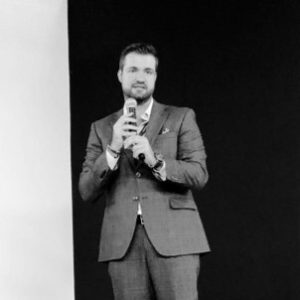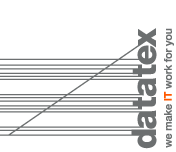
Blockchain for textile industry. Opportunities and challenges
Interview with Marco Epicoco – Co-founder and CEO, Wel Srl
 WEL Srl – An Italian company founded in 2017, Wel is specialised in developing solutions for the digitalisation of work processes, using hardware and software technologies in the field of Blockchain, IOT, IIOT and Wearables.
WEL Srl – An Italian company founded in 2017, Wel is specialised in developing solutions for the digitalisation of work processes, using hardware and software technologies in the field of Blockchain, IOT, IIOT and Wearables.
Just over ten years old, the Blockchain is now one of the leading innovation trends, with huge potential applications in finance and insurance, but also in public administration, logistics and industry. What technical advantages does the Blockchain offer – in general – compared to traditional technologies? What are the most promising and interesting applications at the moment?
We have to start by making a micro focus on what blockchain is, which is a technology that exploits the characteristics of a computer network nodes and allows to manage and update, in an unequivocal and secure way, a register containing data and information, all in an open, shared and distributed way, without the need of a central controlling and verifying entity.
The blockchain makes it possible to manage a database in a distributed way, and represents – in a nutshell – an alternative to centralized repositories, in the sense that it makes it possible to control the updating of data with the collaboration of network participants, and with the possibility of having data shared, accessible and distributed among all participants.
To sum up: the blockchain represents an epoch-making step forward compared to classic cloudification, and makes it possible to guarantee the immutability – and consequently the certification – of the data that pass through it, essentially becoming a vehicle for authenticating digital information and creating added value from it.
The applications of blockchain are innumerable. For example:
– in the Sharing economy, with a view to a truly decentralized and sharing economy;
– in Governance, making all results accessible and available to users, with a distributed database technology that could give full transparency to elections or any other kind of poll;
– in areas such as the Internet of Things and Data Management, where the combination with blockchain makes it possible to automate the remote management of systems, facilitating the exchange of data between objects and mechanisms and combining it with the certification of everything, providing enormous added value in terms of quality and transparency.
Blockchain is also much talked about in the textile world today, and recently – for example – giants such as LVMH, Prada and Richemont have launched a new major project for the sector called “Aura Blockchain Consortium”. While the “Trick Project”, for the use of Blockchain in textile traceability, is under Italian leadership, and involves several important Made in Italy textile companies. To what extent can these and other major projects of this kind, focused on the use of Blockchain, revolutionize the world of textile-fashion in the coming years?
The use of blockchain in the textile and fashion industry can offer countless advantages, not only in terms of competitiveness but also in terms of protecting and enhancing one’s intellectual property rights. A very interesting application in this regard is Smart Contracts, or Digital Contracts, which protect copyright and automate the sale of creative works online, eliminating the risks associated with the existence of copies of a file and their distribution without the author’s permission.
But the blockchain’s potential for the textile sector does not end there!
I’m thinking in particular of the possibility of combining the blockchain with documents relating to particular production processes of a yarn or fabric and proof of use, documents therefore relating to the production chain of a garment – for example – “Made in Italy”. From this point of view, blockchain can prove to be very useful, as it allows the production chain to be traced, increasing transparency and consumer confidence, and making it possible to prevent widespread attempts at product counterfeiting, by consolidating certifications relating to the origin, processing and quality of the final products.
The blockchain therefore makes it possible to pre-establish, as certain proof, the immutability of the data/document, introducing into the future of the textile-fashion world – when it will be fully governed at a regulatory level – that full traceability and transparency that consumers have long been demanding. The consumer, as well as every actor in this huge ecosystem, will therefore be able to trace the entire life cycle of the textile product, from raw material to finished good, ensuring greater security and higher levels of comfort in purchasing.
Looking at concrete and specific applications for SMEs, how can Blockchain help a textile manufacturing company in its everyday life? What opportunities can it offer?
The best way to answer this question is through a practical example, personally experienced by WEL. One of our client’s textile companies wanted to interface with its entire production system, with the aim of digitalising processes and enabling full traceability and localisation of production itself.
The company wanted to be able to collect data from the machines and at the same time keep track of the different production steps the product has undergone. To achieve this, WEL developed a BIoT localisation structure and machine interconnection logics.
The company’s ability to enter the world of traceability as a developer of BIoT systems, thus developing the particular combination of Blockchain and IoT, has allowed it to create a synergy capable of certifying the data generated by IoT devices from its origin thanks to Blockchain, a technology which, as an additional added value, has the characteristic of being permissionless.
Furthermore, the possibility of scaling up the solution to all the different players in the textile market, and thus of collecting through the platform protected data for products, semi-finished products and services throughout the supply chain, will make it increasingly possible to create transparent supply chain models, in order to guarantee the quality of production and to define the origin of products in an unequivocal manner.
Wel is an Italian company that offers consultancy and innovative solutions for corporate digitalisation through IoT, Blockchain and Wearable technologies. How was Wel born? What are your strengths and the most interesting projects you are working on?
Wel, founded in 2017, was born from the creative vein of the two founders Marco Epicoco and Stefano Grima, who, thanks to the experience gained in process management in the industrial and financial fields, decided to scale what is their know-how in the 4.0 world, through the development of solutions based on IoT, Wearable and Blockchain. The aim is to support companies in their attempt to respond to the main issues of this 4.0 era:
– generating and making remote production data for the digitalisation of processes;
– certifying routes with a view to traceability;
– educating and encouraging the use of data in order to improve efficiency, create savings and generate new revenue models.
WEL’s power lies in the fact that it has identified the key needs that are most prevalent in the various sectors, and that it has had the foresight to propose solutions capable of entering the market in a horizontal, scalable and customisable manner. An interesting detail, finally, is the fact that all WEL products are born and based on Brainy, a native blockchain IoT Hub, which not only allows the management of IoT devices and data collection, but also the certification of the latter from their origin.
CASE STUDY – DE PALMA
An interesting case study is represented by De Palma, a company from Biella specialized in the reprocessing of animal fibers.
De Palma adopts a completely non-toxic and sustainable manufacturing process, which, starting from the waste of the raw material, generates new raw material, according to the principles of circular economy.
The problem is that, like many high-level Italian companies, De Palma was not able to express and communicate its value fully due to the adoption of processes that were still too closely linked to the analogue world.
With the support of WEL and the ERP provider, a modern B-IoT system was implemented in De Palma, which allows the tracking and recording of the various work steps, through the GS1 standard, and then exporting the data related to the individual order in blockchain.
This has generated:
– Savings (thanks to real-time monitoring of the various work phases, bottle necks and waste were detected);
– Efficiency (data analysis has improved the working model);
– Evolved management control (a more precise and punctual control of costs deriving from resources, machinery and raw materials);
– Awareness (the blockchain has made it possible to communicate the “added value” given by the working processes to the stakeholders in the chain and to the end customer);
– Increased sales;
– Product exclusivity;
– Transparency.
Technically, the system involved the use of different technologies:
- Implementation of the native blockchain Brainy IoT hub for data collection, integrative middleware and device management;
- Implementation of an RFID flow to monitor the raw material within the production process;
- Data integration and export from production machines;
- Implementation of an RTLS UWB tracking infrastructure for monitoring resources within the production environment;
- Provision of wearable devices to operators able to track their movements, and above all – in view of safety & security – determination of man down and anomalies of basic medical parameters (heartbeat, respiratory wave and temperature);
- Integration of sensors for monitoring environmental parameters within the production area;
- Integration towards ERP for sharing production data;
- Management of data generated through the GS1 model;
- Implementation of the permissionless Ethereum blockchain flow for “value” data generated by the system.
With a total investment of less than 100,000 euros, a high-quality Italian SME was brought into the world of Industry 5.0.

